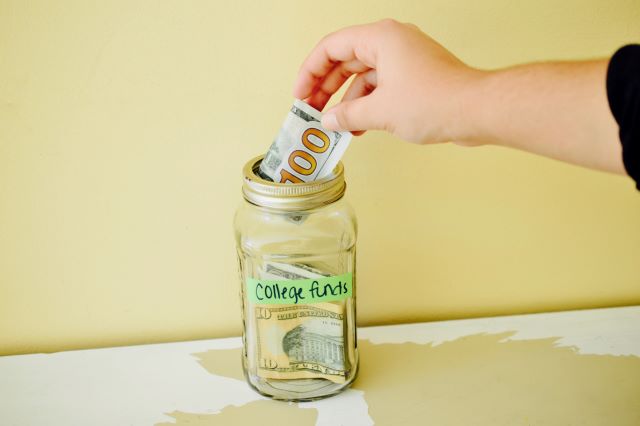
College can be expensive even if you’ve done a good job saving for it. Parents cover about 23% of college costs, and the remainder is the student’s responsibility. Or, in reality, it’s usually up to the parents to help the student figure out how to pay for college. There are many different ways to pay for college, including some unique and creative ways you may not be familiar with.
Tuition reimbursement
Tuition reimbursement is an under-the-radar way to pay for college. It isn’t talked about as much as scholarships or federal aid, but it can be a great way to pay for college. To entice high school and college age students to work, many large employers now offer tuition reimbursement for qualified employees. Every company’s rules are different, and they may pay for a portion or all tuition, but it is certainly worth encouraging the college student in your life to look for work at an employer that offers tuition reimbursement.
It may be easier for some students to qualify for tuition reimbursement from an employer than scholarships or other forms of federal and state aid. Requirements normally aren’t as strict as merit-based financial aid such as scholarships, so tuition reimbursement may be available to a wider range of students. This allows students that wouldn’t normally have access to higher education, either due to money, grades, or other issues, to use tuition reimbursement to get a college degree at a price that won’t break the bank.
Scholarships
Scholarships are available for more than just athletes and music majors; many colleges and organizations offer scholarships to a wide range of students for great academics or test scores, special qualities and abilities, or just because. There is no limit to the amount of scholarships a student can apply to, and while some can be time consuming, many scholarships have very few applicants so the odds are in your student’s favor. Apply for scholarships early and often, even if you think you aren’t the best applicant or don’t believe you have a chance of winning.
Federal aid
The federal government offers financial aid to students in need, and aid is not merit-based, but based on income. The FAFSA form that students fill out every year determines how much aid they will receive. For a detailed look at how FAFSA is calculated, check out our blog post on FAFSA. Federal aid includes grants, which do not have to be paid back, and loans, which do have to be paid back.
Taking out student loans is not ideal, but sometimes unavoidable. They should only be used after all other options (scholarships, grants, tuition reimbursement, etc.) are exhausted. Loans from the federal government typically offer interest rates lower than private student loans and are eligible for special repayment plans, like income-based repayment (IBR) or loan forgiveness, that private student loans aren’t eligible for.
School or state aid
Depending on your state of residence or college of choice, there may be aid available directly from your state or college. Some states offer reduced or free tuition for students with good grades (Georgia, for example, offers the HOPE Scholarship to students with good grades attending in-state schools, and the program is funded through the state lottery). Other states have similar programs, but there are often residency and academic requirements you must meet in order to qualify. Colleges may also have aid to offer students for a variety of reasons, or no reason at all. Once your student is considering attending a particular school, check to see what aid the college is offering.
Loans
If you’ve exhausted every other resource to pay for college and are still coming up a little bit short, you may need to resort to student loans. Some students are eligible for subsidized federal student loans, where the government pays the interest on the loans until the student graduates college. Unsubsidized federal student loans accrue interest while the student is in school, but typically have lower interest rates than private student loans. Parent PLUS loans are loans that parents can take out on behalf of undergraduate students. If federal loans don’t meet your needs, there are private student loans available that will cover just about every cost, but beware: these loans don’t have the same repayment options as federal loans, and interest rates are typically significantly higher.
Student loans aren’t inherently bad; they can help you or the student in your life get an education and open the door for better career opportunities and increase their future earning potential. If you do need to take out student loans, do your best to keep you or your student’s total student loan debt below their expected first year salary out of college. This will ensure the loans don’t become too much of a burden and are able to be paid off in a timely manner after graduation.
Not exploring every avenue to pay for college and taking out too much student loan debt is a decision your future self will really regret. Our latest episode, “6 Financial Decisions Your FUTURE Self Will Regret!”, is all about the things we would change if we could go back in time, and then Back to the Future. Watch it now on YouTube below.













